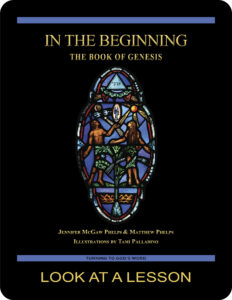disguise
 What does it mean for a person to disguise his or her face when fasting?
What does it mean for a person to disguise his or her face when fasting?
Twice in this week’s translation, we run into an interesting Greek word, ἀφανίζω (aphanizo), and in both cases, the word means something several steps removed from its root meaning. The verb itself contains the prefix α-, which serves to cancel out any other meaning, so it is often translated as “not.” The rest of the word is related to the verb φαίνω, which means, among other things, “I appear” or “I reveal.” The word as a whole, then, means “not appearing” or “not showing.”
In the Gospel According to Matthew 6:16, which I’ve translated as “When you fast, don’t become sullen like the pretenders. They disguise their faces so that they appear to people as fasting. Amen, I say to you, they have their reward,” I translated this word as “disguise.” Disguise is far removed from the word’s root concept of making things unseen, but nonetheless, disguise is a form of hiding. Other translations frequently miss the connotation here that what the pretenders are doing is essentially hiding.
Again, the Gospel According to Matthew 6:19 (NABRE) reads: “Do not store up for yourselves treasures on earth, where moth and decay destroy, and thieves break in and steal,” and contains the same word translated here as “destroy.” Greek has other words for obliterating or destroying a thing, so this is another odd use. Upon reflection, it’s worth noting that moths and rust both would destroy objects by irreparably marring their appearance, and that may perhaps be the reason this word was chosen here.
This example serves to shed some light on the broad potential interpretation involved in any attempt to convey the original New Testament in English including some of the difficulties that arise when attempting to translate from Greek into English. Even for those who know Greek, it is much easier to read in Greek than it is to attempt to convey insights so gained into English.
related topic: repentance
you also may like our study of the book of Genesis
 The first seven lessons of In the Beginning: The Book of Genesis, a 28-lesson Catholic Bible study with an imprimatur, provide an in-depth look at the very earliest biblical history—including the two accounts of Creation, events surrounding the Fall of Adam and Eve, the relationship between Cain and Abel, and the baptismal foreshadowing present in the account of Noah and the Flood. Remaining lessons look at lives of the patriarchs Abraham, Isaac, Jacob, and Joseph. Click on the book’s cover to view a sample lesson.
The first seven lessons of In the Beginning: The Book of Genesis, a 28-lesson Catholic Bible study with an imprimatur, provide an in-depth look at the very earliest biblical history—including the two accounts of Creation, events surrounding the Fall of Adam and Eve, the relationship between Cain and Abel, and the baptismal foreshadowing present in the account of Noah and the Flood. Remaining lessons look at lives of the patriarchs Abraham, Isaac, Jacob, and Joseph. Click on the book’s cover to view a sample lesson.
 Click on the picture of the statue of Moses with horns (above) to learn more about Lost in Translation. A new entry is archived each Monday. Contact us to receive Lost in Translation by email every week. You may use any of the contact links on our website to ask Matthew a question.
Click on the picture of the statue of Moses with horns (above) to learn more about Lost in Translation. A new entry is archived each Monday. Contact us to receive Lost in Translation by email every week. You may use any of the contact links on our website to ask Matthew a question.
